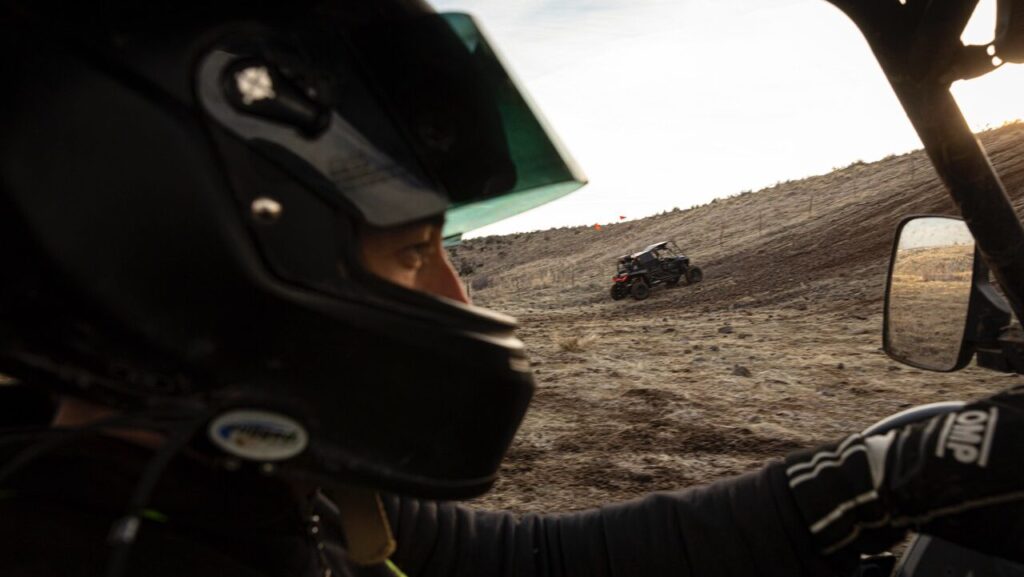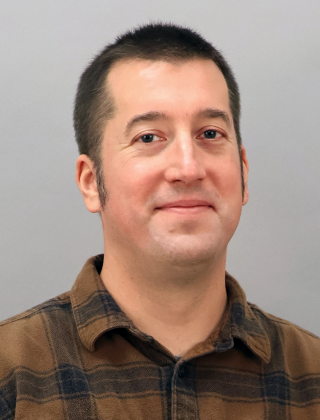This job has put me in places that I never would have imagined. This job is incredible! You can’t get these opportunities any other way.”
Unpredictable and Limitless Opportunities
As a Navy-designated University Affiliated Research Center (UARC), APL prioritizes its mission in supporting national defense. Here at APL, much of our research and projects are conducted for the Department of Defense (DoD). Greg Okopal’s work directly contributes to this mission.
Greg Okopal is a Principal Engineer in the Environmental and Information Systems (EIS) Department. Being at APL for 18 years – 5 years as an affiliate, then 13 years as a full-time employee – Greg has laid down roots. Most of his work is applied to DoD problems.

“We work on applied things in EIS. These types of DoD problems have a direct application to military operations. When we do tests, they’re on military installations. We work for the mission.”
– Greg Okopal
Before his appointment at APL, Greg earned his B.S. in Computer Engineering at Villanova University in 2002. At that time, Greg found himself in the depths of the dot com crash. Instead of searching for employment after graduation, he decided to apply for graduate school at the University of Pittsburgh. He went to grad school originally unfunded, paying out of pocket. His first priority was to find a funded project.
In his first semester, Greg attended a seminar for automatic classification of targets using sonar, which directly linked to the Navy. This lined up with Greg’s interests and focus on signal processing. Thoroughly intrigued with this project, Greg reached out to the professor, Pat Loughlin, who gave the seminar. Luckily, Dr. Loughlin needed a grad student and had funding. Everything seemed to line up. This led Greg down the path of naval work, submarines, and other DoD work. Due to the required clearance level for some aspects of his work, Greg became an affiliate researcher at APL. He later earned his M.S. and Ph.D. in Electrical Engineering.
Greg was an affiliate at APL for five years, something he describes as a “five year long audition for a job.” By the time he finished his Ph.D., Greg had strong connections to the people and work at APL and becoming a full-time employee was a natural progression.
Meet Greg Okopal

Major
B.S., M.S., Ph.D. Electrical Engineering
How I came to APL-UW
The work I was doing with the University of Pittsburgh introduced me to APL-UW. I had no idea about APL before my exposure to clearance level work.
Who helped me along the way
My advisor at the University of Pittsburgh, Pat Loughlin. He is the main reason I am here. He had direct connections with UW and APL, and because of the sensitive nature of some of the work it made sense for me to become an affiliate here. Pat arranged for me to become an Affiliate Researcher at APL and to come to Seattle for about two months each year. I’d always come in the summer when the Pacific Northwest is absolutely beautiful.
Standout moment
There’s not one moment, but I have a common realization about every few months or so. This job has put me in places that I never would have imagined. I’ve been in a 3-person manned submarine in Lake Washington and the Puget Sound for high frequency sonar work. I’ve been in two-seater airplanes flying radars over Puget Sound. I’ve been in San Diego rooftops setting up sensors. I’ve tested autonomous off-road vehicles in Snoqualmie and Ellensburg. This job is incredible! You can’t get these opportunities any other way.
Greg joined APL in 2009 as a senior engineer. He describes EIS as the “catch all” department, where the projects are expansive, various, and directly applied to DoD problems. Different from basic research, EIS focuses on applied work, which the sponsors (mainly Navy and all branches of DoD) can directly apply to their problems.
One project Greg and the EIS department is working on is Autonomous Underwater Vehicles (AUVs). Greg also focuses on more components in what is called the autonomy stack, allowing robots to make more intelligent decisions and arbitrate through obstacles without human operators. Other projects Greg has worked on include those with the Defense Advanced Research Projects Agency (DARPA), such as counter-drone sensors. On the rooftops of San Diego, Greg and other APL researchers have deployed sensing systems that detect and track drones in urban areas. Currently, Greg spends most of his time on autonomous off-road land navigation.